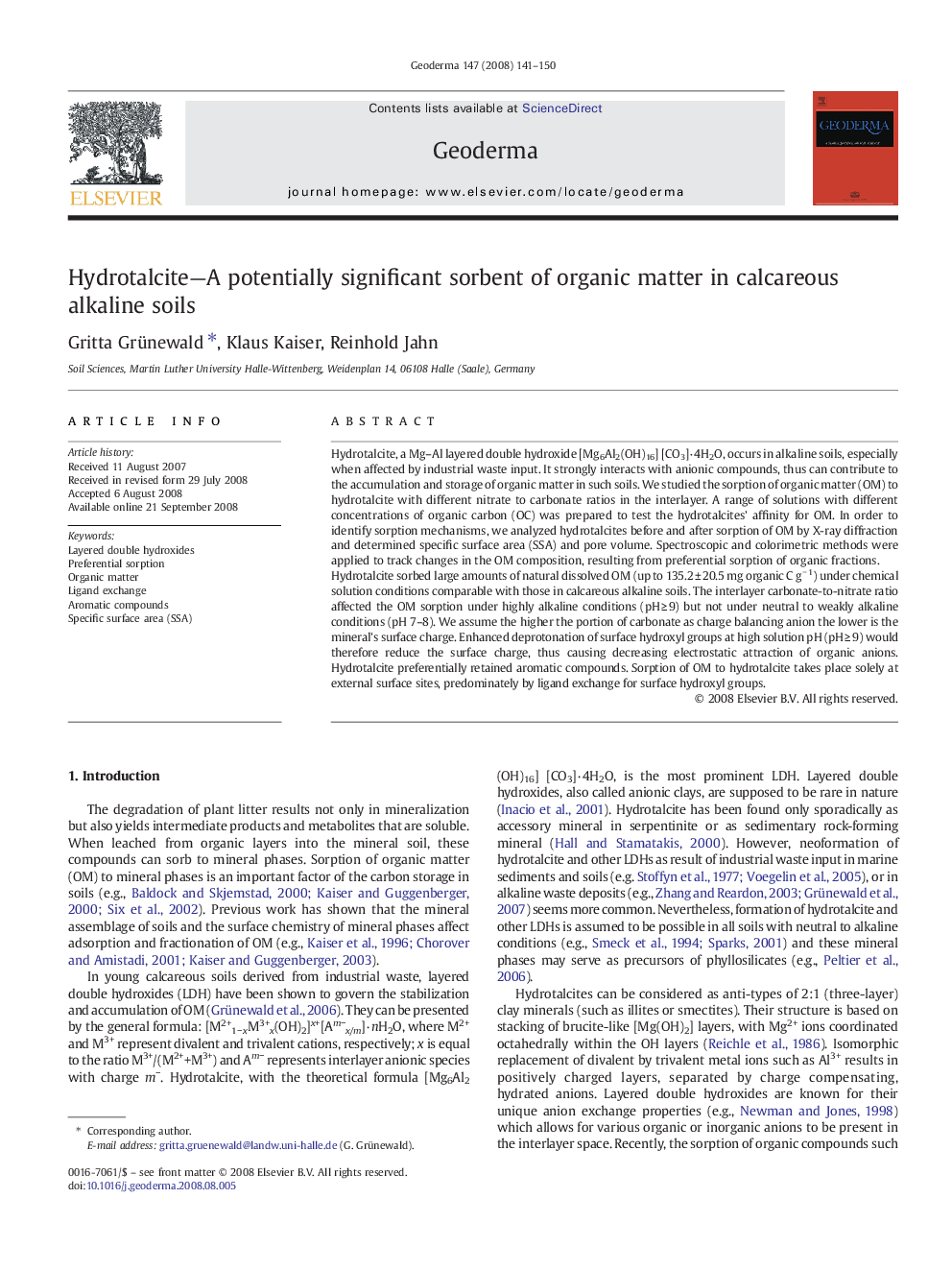| Article ID | Journal | Published Year | Pages | File Type |
|---|---|---|---|---|
| 4574897 | Geoderma | 2008 | 10 Pages |
Hydrotalcite, a Mg–Al layered double hydroxide [Mg6Al2(OH)16] [CO3] · 4H2O, occurs in alkaline soils, especially when affected by industrial waste input. It strongly interacts with anionic compounds, thus can contribute to the accumulation and storage of organic matter in such soils. We studied the sorption of organic matter (OM) to hydrotalcite with different nitrate to carbonate ratios in the interlayer. A range of solutions with different concentrations of organic carbon (OC) was prepared to test the hydrotalcites' affinity for OM. In order to identify sorption mechanisms, we analyzed hydrotalcites before and after sorption of OM by X-ray diffraction and determined specific surface area (SSA) and pore volume. Spectroscopic and colorimetric methods were applied to track changes in the OM composition, resulting from preferential sorption of organic fractions.Hydrotalcite sorbed large amounts of natural dissolved OM (up to 135.2 ± 20.5 mg organic C g− 1) under chemical solution conditions comparable with those in calcareous alkaline soils. The interlayer carbonate-to-nitrate ratio affected the OM sorption under highly alkaline conditions (pH ≥ 9) but not under neutral to weakly alkaline conditions (pH 7–8). We assume the higher the portion of carbonate as charge balancing anion the lower is the mineral's surface charge. Enhanced deprotonation of surface hydroxyl groups at high solution pH (pH ≥ 9) would therefore reduce the surface charge, thus causing decreasing electrostatic attraction of organic anions. Hydrotalcite preferentially retained aromatic compounds. Sorption of OM to hydrotalcite takes place solely at external surface sites, predominately by ligand exchange for surface hydroxyl groups.
